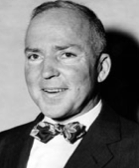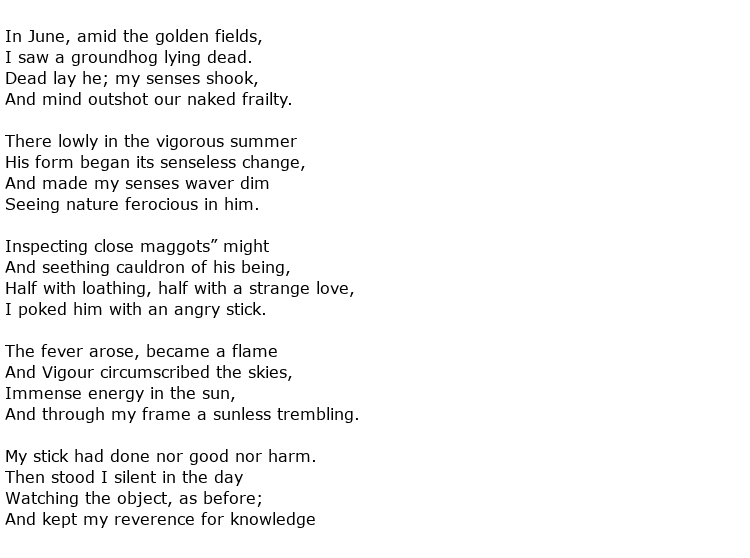 Richard Eberhart was a remarkable American award-winning poet and playwright whose long life spanned the early years of both the 20th and 21st centuries. His considerable output of poetry saw him publish at least a dozen books of verse and he won both a Pulitzer Prize and National Book Award for two of his collections.
Richard Eberhart was a remarkable American award-winning poet and playwright whose long life spanned the early years of both the 20th and 21st centuries. His considerable output of poetry saw him publish at least a dozen books of verse and he won both a Pulitzer Prize and National Book Award for two of his collections.
He was born Richard Ghormley Eberhart on the 5th April 1904 in the small Minnesota town of Austin. His family were comfortably off and he spent his formative years on a large estate of land which was called Burr Oaks at the time. This no longer exists as it has long since been divided into many smaller parcels of land. His experiences of growing up in such a rural environment are recalled in his 1947 collection of poetry, called Burr Oaks.
Eberhart had a slightly disjointed education with spells at the University of Minnesota and then Dartmouth College being followed by a period working in some fairly menial jobs, including as a deck hand on board a ship. Perhaps this inspired him to travel and he found himself in England, enrolling at St. John”s College, Cambridge where he fell under the influence of educator and literary theorist Ivor Armstrong Richards, a man who actively encouraged his protégé to write poetry. A first collection came out in 1930 under the title A Bravery of Earth which featured poems recalling his time at Cambridge and also his ship-board adventures.
He had an interesting assignment acting as private tutor to the son of the King of Siam between 1931-32 before heading back to the States to study at Harvard for a year. One of his contemporaries there was the famous T S Eliot. Following this he had an eight-year spell teaching at the all-boys St Mark’s school in Massachusetts, covering the years 1933-41. In 1937 he had another collection of poetry published called Reading the Spirit and this included a curious poem called The Groundhog, which became one of his most famous pieces of work. It tells of the discovery of a dead animal in a field, already decaying and maggot-infested, and then of his subsequent visits to the sight over a period of time. The carcass becomes bleached bones and then, inevitably, disappears altogether. Here are the opening verses of this poem:

Eberhart served as a US Naval Reserve officer during the Second World War and, not surprisingly, wrote of this time with poems such as The Fury of Aerial Bombardment dramatically capturing the drama and horror of naval warfare. This was included in his 1945 collection Poems: New and Selected. He had got married in 1941 and, following the war, he found employment with a floor wax company run by his wife Helen’s family, this taking up six years of his life.
He then went back to teaching and worked at a number of establishments up to the time of his retirement, including Columbia University, Dartmouth College and Princeton University. He actually spent 30 years at Dartmouth, both as poet-in-residence and as a professor of English where he mentored many young poets. The 1950s saw Eberhart write a number of plays which were performed at regional theatres. He also played a significant role in getting the new “Beat generation” poetry recognised when he travelled to San Francisco to write an article on this movement for the New York Times. One of its famous exponents, Allen Ginsberg, later gave the author credit for the Beats’ emergence and recognition.
Eberhart won many prizes and awards for his work including the Bollingen Prize in 1962 and the Pulitzer Prize three years later for his collection Selected Poems, 1930–1965. Between 1959-61 he served as Poet Laureate Consultant in Poetry to the Library of Congress.
Richard Eberhart’s long life came to an end of the 9th June 2005. He died peacefully at his home in Hanover, New Hampshire at the grand old age of 101

